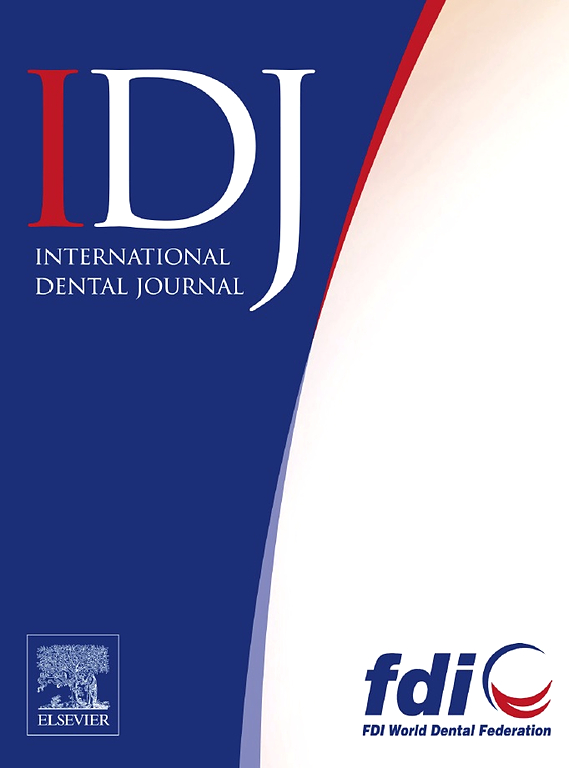Automatic Point Cloud Patching of Intraoral Three-Dimensional Scanning Based on Deep Learning
IF 3.2
3区 医学
Q1 DENTISTRY, ORAL SURGERY & MEDICINE
引用次数: 0
Abstract
Introduction and aims
Intraoral scanning (IOS) captures real-time surface morphology of teeth and is widely used in clinical dentistry. However, due to the complex intraoral environment, data loss during scanning is common, leading to incomplete three-dimensional (3D) point clouds. This study aimed to develop and evaluate a deep learning–based method to automatically restore missing regions in intraoral 3D point clouds, thereby improving the accuracy and efficiency of digital orthodontic workflows.
Methods
A Point Fractal Network architecture was adopted to reconstruct incomplete IOS data. A dataset comprising 314 IOS scans and 4162 individual teeth was used for training and validation. Missing data were simulated by removing random portions of point clouds (5%, 10%, 15%, and 20%). Model performance was assessed using Chamfer distance (CD) to measure the accuracy of point cloud completion across different levels of data loss.
Results
The proposed method achieves robust performance, maintaining average CD values below 0.01 across most levels of simulated data loss. Visual comparisons confirmed high geometric fidelity between the completed and original point clouds. Furthermore, the model demonstrated efficient processing, completing each point cloud in approximately 0.5 seconds, enabling near real-time restoration during clinical scanning.
Conclusion
The deep learning–based model accurately restores missing IOS data, improving the precision and efficiency of digital dental workflows. Its speed and accuracy support real-time clinical applications and reduce reliance on manual corrections.
Clinical Relevance
This method improves clinical efficiency, reduces chairside time, and enhances both patient comfort and treatment acceptance. In addition, it minimises human error and increases the precision of dental restorations. As digital dentistry continues to evolve, this approach holds great potential for improving the accuracy and efficiency of dental treatments, paving the way for broader artificial intelligence integration in clinical practice.
基于深度学习的口内三维扫描点云自动修补
口腔扫描(ios1)是一种实时捕获牙齿表面形态的技术,在临床牙科中得到了广泛的应用。然而,由于口腔内环境复杂,扫描过程中数据丢失是常见的,导致三维(3D)点云不完整。本研究旨在开发和评估一种基于深度学习的方法来自动恢复口腔内三维点云中的缺失区域,从而提高数字正畸工作流程的准确性和效率。方法采用点分形网络结构对不完整的IOS数据进行重构。一个包含314个IOS扫描和4162个牙齿的数据集用于训练和验证。通过去除点云的随机部分(5%、10%、15%和20%)来模拟缺失的数据。使用倒角距离(CD)来评估模型性能,以测量不同数据丢失水平下点云补全的准确性。结果所提出的方法具有鲁棒性,在大多数模拟数据丢失水平下,平均CD值保持在0.01以下。视觉对比证实了完成的和原始点云之间的高几何保真度。此外,该模型显示了高效的处理,在大约0.5秒内完成每个点云,在临床扫描期间实现近乎实时的恢复。结论基于深度学习的模型能够准确还原缺失的IOS数据,提高数字化牙科工作流程的准确性和效率。它的速度和准确性支持实时临床应用,并减少对人工校正的依赖。该方法提高了临床效率,减少了坐在椅子旁的时间,提高了患者的舒适度和治疗接受度。此外,它最大限度地减少了人为错误,提高了牙齿修复的精度。随着数字牙科的不断发展,这种方法在提高牙科治疗的准确性和效率方面具有巨大的潜力,为临床实践中更广泛的人工智能集成铺平了道路。
本文章由计算机程序翻译,如有差异,请以英文原文为准。
求助全文
约1分钟内获得全文
求助全文
来源期刊

International dental journal
医学-牙科与口腔外科
CiteScore
4.80
自引率
6.10%
发文量
159
审稿时长
63 days
期刊介绍:
The International Dental Journal features peer-reviewed, scientific articles relevant to international oral health issues, as well as practical, informative articles aimed at clinicians.
 求助内容:
求助内容: 应助结果提醒方式:
应助结果提醒方式:


